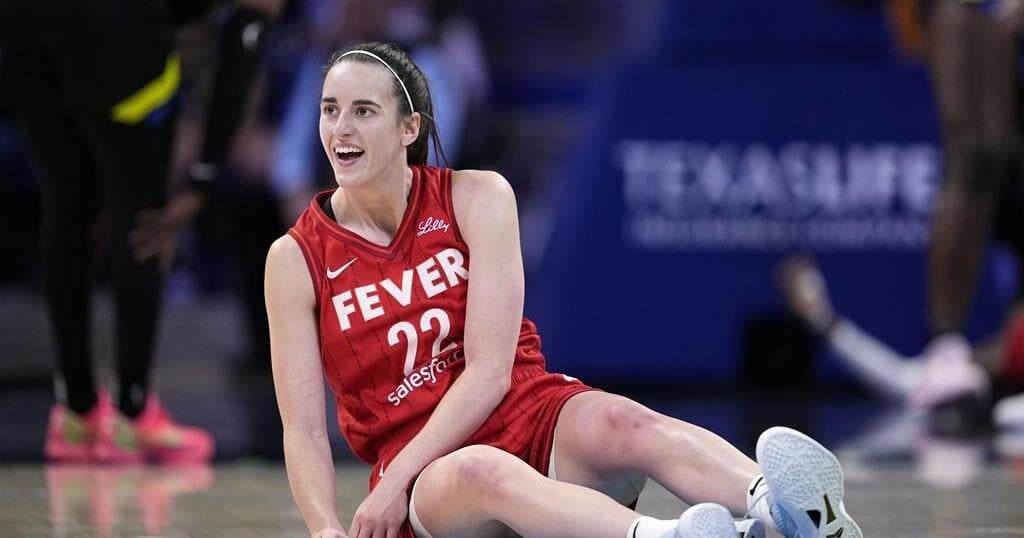A’ja Wilson had a season like none other in WNBA history. Caitlin Clark set records and made the Indiana Fever the biggest draw in the women’s game. Angel Reese rebounded like nobody the league has ever seen.
The WNBA regular season is over. And the stat sheets were filled like never before.
Lots of records — most points, most rebounds, most assists, even most people at a game — fell during the WNBA’s 28th regular season. Wilson, Clark and Reese were in the middle of many of those moments.
Here’s a look at some big numbers from the season:
A’ja Wilson: Will it be u’nanimous?
Wilson did things this season that have never been done in the WNBA. (And never been officially done in the NBA, either.)
Most points in a season, most rebounds in a season and most blocked shots in a season. That’s never happened by one player in one year, until now. The Las Vegas star set WNBA records with 1,021 points and 451 rebounds, plus led the league in blocks with 98.
Another record for Wilson: points per game with 26.9, breaking Diana Taurasi’s mark of 25.3 that stood since 2006. WNBA teams didn’t always play 40-game seasons, so 1,000 points wasn’t even a remote possibility in the days of shorter schedules. The scoring-average record takes away any debate from where Wilson’s 2024 season should rank.
It seems certain that she’s going to be MVP for a record-tying third time. The only real question is whether she gets all the votes. “U’nanimous,” Miami Heat center Bam Adebayo said on social media last week, and it didn’t need any explaining.
Caitlin Clark: Rookie numbers stand alone
Clark broke the WNBA single-game record for assists with 19, broke the season record for assists with 337 and finished her rookie Indiana season with a resume of averages beyond compare.
Others have scored more, rebounded more and one player — Courtney Vandersloot — has averaged more assists in a season. But nobody in WNBA history ever averaged as much in all three categories as Clark this season: 19.2 points, 5.7 rebounds and 8.4 assists per game.
There have been only four other instances of a player averaging 15-5-5 in the WNBA. Clark is the first in the 19-5-8 club.
Clark also had 12 games of at least 10 points and 10 assists, another single-season record. Only eight players in WNBA history have more such games in their entire careers.
Clark also had two triple-doubles in her rookie season. No other rookie in WNBA history has ever had one. And her 122 3-pointers — the second-most by anyone in any WNBA season — was another rookie record.
Angel Reese: A rebounding machine
Reese would have set the WNBA record for rebounds in a season had she not missed Chicago’s final six games, citing a wrist injury. (She had the record briefly with 446, before Wilson caught her toward the end of the regular season.)
The rebounds-per-game record is hers though: 13.1, which is 10% higher than the previous mark of 11.9 set by Sylvia Fowles in 2018.
Reese’s 26 double-doubles were another rookie record; Tina Charles had 22 (in a 34-game season) in 2010. There were six instances in the WNBA this season of someone grabbing 18 or more rebounds; Reese had five of them.
Another big number: Ticket sales
Last season, 227,979 tickets were sold for Indiana Fever games. This season, the number was 643,343.
That’s a 182% jump. That’s Caitlinmania.
WNBA attendance soared to a level not seen since the late 1990s this season, with around 9,800 tickets distributed on average for each game. That’s up nearly 44% from last season, and the huge increase in Fever tickets accounts for the overwhelming majority of that leaguewide growth.
The Fever destroyed the previous WNBA record for average attendance; 16,084 tickets, on average, were sold for Indiana games (both home and away) this season, way ahead of the previous mark of 13,398 set by the 1998 New York Liberty.
And Thursday, as the season closed, Clark was involved in another record: 20,711 attended Indiana’s game at the Washington Mystics, a WNBA all-time regular season mark.
Where she went, fans followed: There were 37 games this season that drew crowds of 16,000 or more, and 32 of them were Indiana games.
Notables: A few stats that stood out
— Atlanta’s Tina Charles became the WNBA’s all-time leader in rebounds (4,014) and double-doubles (194), getting those marks with a 10-point, 10-rebound effort Thursday as the regular season ended. She passed Sylvia Fowles on both of those lists.
— Dallas’ Arike Ogunbowale was already the league’s record-holder for minutes in a season (1,493 in 2023), and this year she broke the record for minutes per game that Katie Smith held since 2001. Ogunbowale — who also tied the WNBA single-game record for 3-pointers with nine against Indiana on Sept. 1 — averaged 38.58 minutes; Smith’s record was 38.56. If Ogunbowale played one fewer minute this season, Smith would still hold the mark.
— Minnesota’s Napheesa Collier had eight steals in a game against Los Angeles on June 14. The last time a WNBA player had more steals in a game? July 10, 2003, when Ticha Penichiero had a league-record 10 for Sacramento.
___































